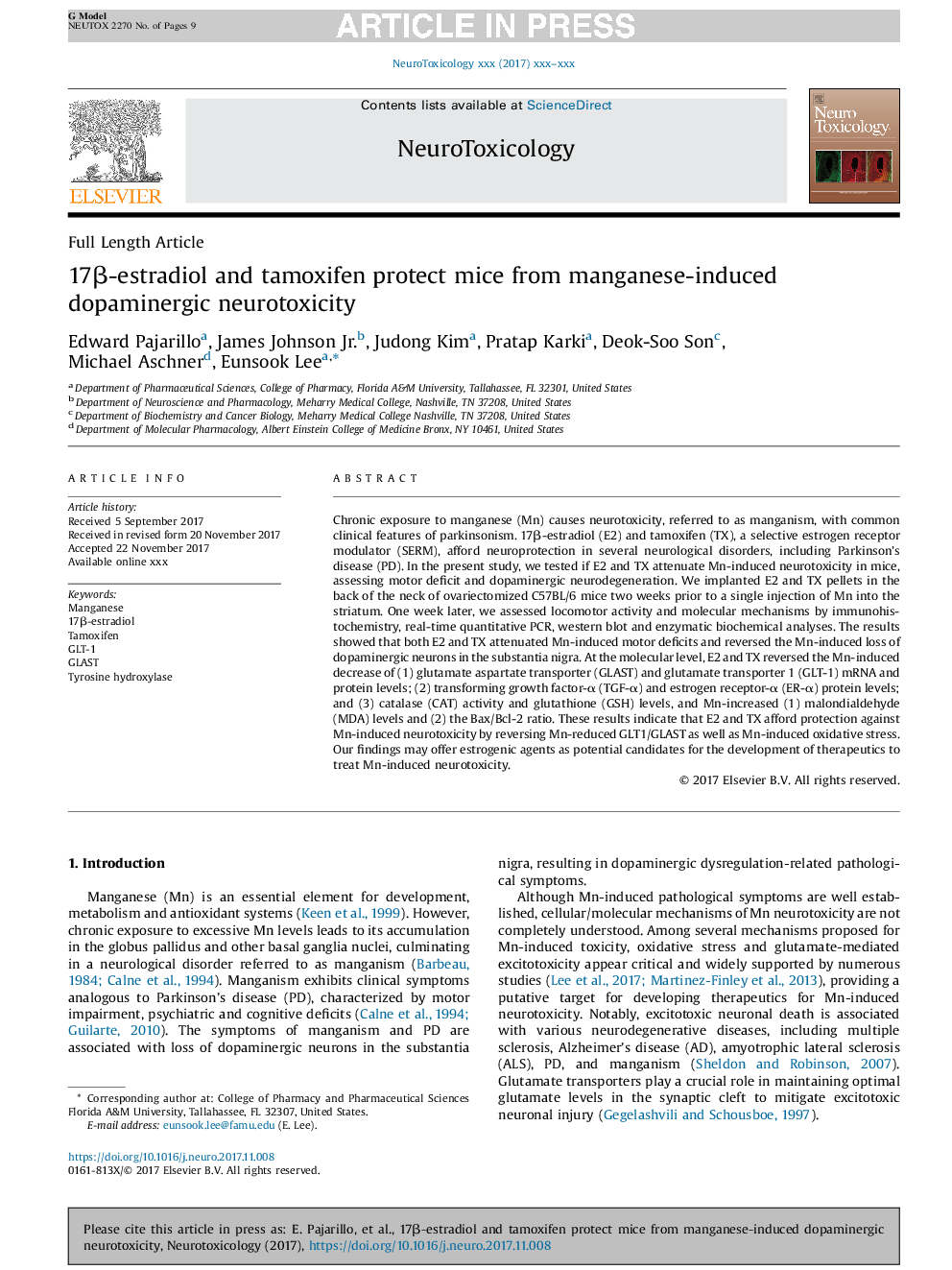| Article ID | Journal | Published Year | Pages | File Type |
|---|---|---|---|---|
| 8550277 | NeuroToxicology | 2018 | 9 Pages |
Abstract
Chronic exposure to manganese (Mn) causes neurotoxicity, referred to as manganism, with common clinical features of parkinsonism. 17β-estradiol (E2) and tamoxifen (TX), a selective estrogen receptor modulator (SERM), afford neuroprotection in several neurological disorders, including Parkinson's disease (PD). In the present study, we tested if E2 and TX attenuate Mn-induced neurotoxicity in mice, assessing motor deficit and dopaminergic neurodegeneration. We implanted E2 and TX pellets in the back of the neck of ovariectomized C57BL/6 mice two weeks prior to a single injection of Mn into the striatum. One week later, we assessed locomotor activity and molecular mechanisms by immunohistochemistry, real-time quantitative PCR, western blot and enzymatic biochemical analyses. The results showed that both E2 and TX attenuated Mn-induced motor deficits and reversed the Mn-induced loss of dopaminergic neurons in the substantia nigra. At the molecular level, E2 and TX reversed the Mn-induced decrease of (1) glutamate aspartate transporter (GLAST) and glutamate transporter 1 (GLT-1) mRNA and protein levels; (2) transforming growth factor-α (TGF-α) and estrogen receptor-α (ER-α) protein levels; and (3) catalase (CAT) activity and glutathione (GSH) levels, and Mn-increased (1) malondialdehyde (MDA) levels and (2) the Bax/Bcl-2 ratio. These results indicate that E2 and TX afford protection against Mn-induced neurotoxicity by reversing Mn-reduced GLT1/GLAST as well as Mn-induced oxidative stress. Our findings may offer estrogenic agents as potential candidates for the development of therapeutics to treat Mn-induced neurotoxicity.
Related Topics
Life Sciences
Environmental Science
Health, Toxicology and Mutagenesis
Authors
Edward Pajarillo, James Jr., Judong Kim, Pratap Karki, Deok-Soo Son, Michael Aschner, Eunsook Lee,
